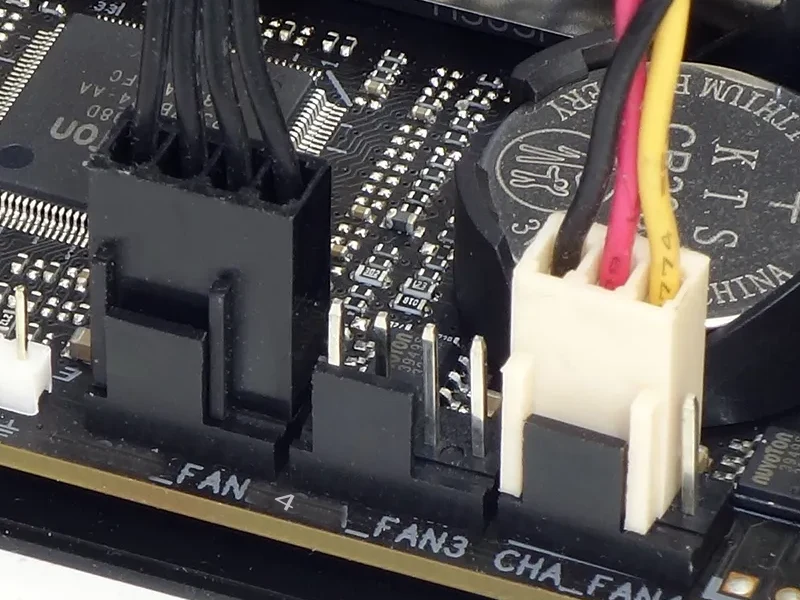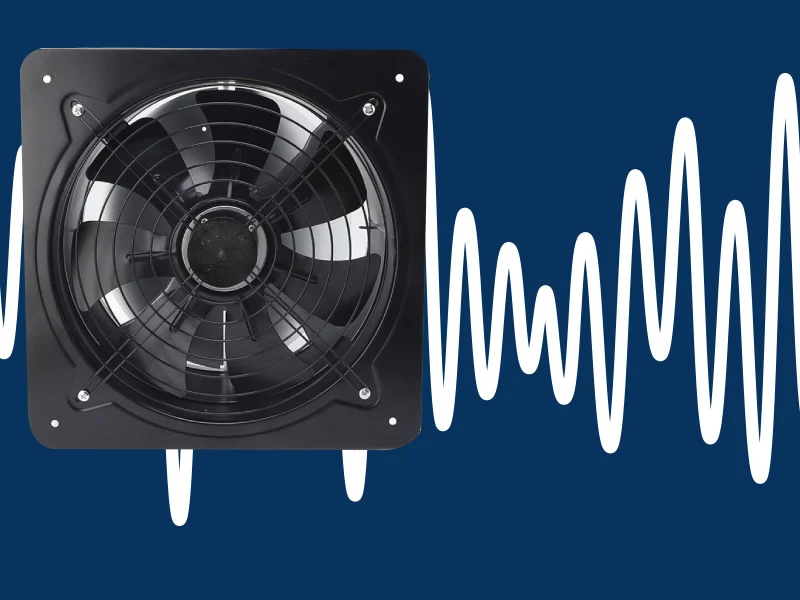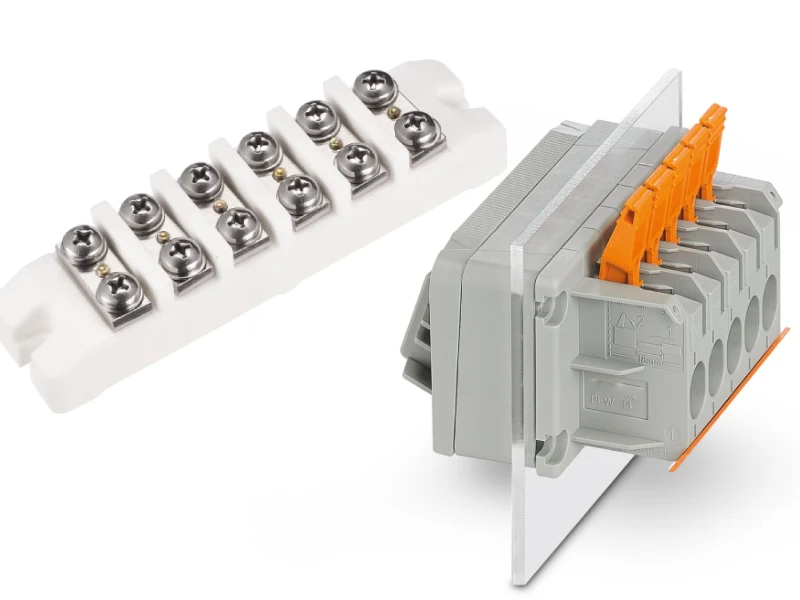You rely on your transmission cooling fan to keep your transmission from overheating and breaking down. This small device keeps things running smoothly, especially when your system works hard. Cabinet cooling fans do a similar job in factories and electrical rooms. They protect sensitive equipment from heat damage. In fact, the global market for these fans is booming, growing at 8.5% each year as companies look for better ways to manage heat. Linkwell stands out as a trusted source for cabinet cooling solutions that help you keep your equipment safe and efficient.
Key Takeaways
- A transmission cooling fan prevents overheating, protecting your vehicle’s transmission and extending its lifespan.
- Ignoring transmission cooling can lead to costly repairs and reduced vehicle performance. Regular checks are essential.
- Cabinet cooling fans are crucial in industrial settings, safeguarding sensitive electronics from heat damage and ensuring operational efficiency.
- Choosing the right cooling fan involves considering size, power requirements, and maintenance ease to match your specific needs.
- Linkwell offers reliable cooling solutions with energy-efficient designs, helping you save on costs while protecting your equipment.
Transmission Cooling Fan Importance

What Is a Transmission Cooling Fan?
You might wonder what a transmission cooling fan actually does. This fan sits near your transmission and helps move air across the transmission cooler. Its main job is to cool down a transmission when things get hot, especially during heavy use or in tough driving conditions. You’ll find transmission cooling fans in commercial vehicles, trucks, and even some high-performance cars. These fans work together with an automatic transmission cooler to keep temperatures in check.
When you drive for long hours or carry heavy loads, your transmission works harder. The transmission cooling fan steps in to support the automatic transmission cooler, making sure your transmission doesn’t overheat. If you drive in extreme climates or rough terrain, this fan becomes even more important. It helps cool down a transmission quickly, so you can keep moving without worry.
Why Transmission Cooling Matters
Keeping your transmission cool isn’t just about comfort. It’s about protecting your vehicle and saving money. Transmission overheating can cause serious problems. Here’s what can happen if you ignore it:
- Overheating damages internal transmission parts, which shortens the lifespan of your system.
- Transmission fluid breaks down, so lubrication drops and friction rises. This leads to faster wear and tear.
- You might notice erratic shifting or sluggish acceleration. These are signs that transmission overheating is hurting efficiency.
- If overheating continues, you risk total transmission failure. Repairs or replacements can get expensive.
You want your transmission to last as long as possible. That’s why a transmission cooling fan and an automatic transmission cooler are so important. They work together to cool down a transmission and prevent costly breakdowns. If you drive a commercial vehicle, you know how much you depend on your transmission every day. A reliable cooling system keeps your transmission running smoothly, even when the workload gets tough.
Tip: If you notice your transmission shifting strangely or the temperature gauge rising, don’t wait. Check your cooling system and make sure your transmission cooling fan and automatic transmission cooler are working properly.
How Transmission Cooling Fans Work
Cooling Mechanism in Transmission Systems
You want your transmission to stay cool, especially when you push your vehicle hard. The transmission cooling fan helps by moving air across the transmission cooler. This process pulls heat away from the transmission fluid. When the fluid stays cool, your transmission works better and lasts longer.
Heat is the enemy of any transmission. If the fluid gets too hot, it breaks down fast. Take a look at this table to see how temperature affects fluid life:
| Temperature (°F) | Fluid Life Expectancy |
|---|---|
| 200 | Long life |
| 220 | Cut in half |
| 300 | Few hundred miles |
| 400 | Minutes |
You can see that even a small jump in temperature can make a big difference. Keeping the transmission fluid at the right temperature means you avoid costly repairs and keep your vehicle running smoothly.
Transmission Cooler and Fan Integration
You get the best results when you pair a transmission cooler with a fan. The fan kicks in when the fluid reaches a certain temperature, usually around 180°F. This setup uses a thermostat to control the fan, so it only runs when needed. You save energy and keep your transmission at the perfect temperature.
Here’s what makes this combo so effective:
- A remote cooler with a fan gives you better cooling than a stock system.
- Standalone coolers can drop the temperature by almost 200°F.
- The fan and cooler work together to handle heavy loads and tough conditions.
When you use a transmission cooling fan with a quality cooler, you protect your transmission from overheating. You get more miles out of your vehicle and fewer headaches down the road.
Cabinet Cooling Fan by Linkwell
Cabinet Cooling Fan Overview
You know how important it is to keep your equipment cool, just like you rely on a transmission cooling system to protect your vehicle. In industrial settings, cabinet cooling fans play a similar role. They help you manage heat inside electrical enclosures, control panels, and telecom cabinets. When you use a quality cabinet cooling fan, you prevent overheating, reduce downtime, and extend the life of your sensitive electronics.
Linkwell stands out as a leader in this field. You get access to a wide range of solutions, including both Axial Fan and Cabinet Fan models. These fans use smart design features to keep your systems running smoothly:
- Natural convection efficiency lets hot air rise and escape, while cool air enters from the bottom.
- Reduced static pressure drop means your fan uses less energy and faces less resistance.
- Tool-free maintenance makes filter changes quick and easy.
- Smart filter monitoring alerts you when it’s time for a replacement.
- IP54 and IP55 ratings protect your equipment from dust and water, even in harsh environments.
You can see how airflow capacity varies across different models in the table below:
| Fan Model | Airflow Capacity (CFM) |
|---|---|
| KB650 | 210 |
| KB651 | 350 |
| KB800 | 400 |
| KB802 | 840 |
| KB900 | 560 |
| KB1000 | 750 |

When you choose the right fan, you create a safe environment for your equipment, just like the benefits of a transmission cooler keep your transmission protected.
Linkwell Axial Fan Features
You want a fan that does more than just move air. Linkwell’s Axial Fans give you advanced features that set them apart from the competition. Here’s what you get:
| Feature | Description |
|---|---|
| Impedance Protection | Stable operation even when power fluctuates—perfect for tough industrial jobs. |
| Wide Voltage Range | 220V–240V compatibility, so you don’t need extra voltage converters. |
| Energy Efficiency | 17–20W power use, which cuts energy costs by 20% compared to old-school fans. |
| Corrosion-Resistant Frame | Durable and lightweight, making it easy to install and move. |
| IP54 Rating | Dust and water resistance for safe operation in harsh places. |
| High Airflow | 84 CFM airflow, which beats industry standards by 40% for better cooling. |
You also get tool-free filter changes, smart filter monitoring, and a design that keeps maintenance simple. Linkwell’s fans come with CE, RoHS, and UL certifications, so you know you’re getting a product that meets strict safety and environmental standards.
| Certification | Description |
|---|---|
| CE | Compliance with European safety standards |
| RoHS | Restriction of hazardous substances |
| UL | Underwriters Laboratories safety certification |
If you need something special, Linkwell offers customization options like variable speed, advanced controls, and unique mounting styles. You can tailor your fan to fit your exact needs, just like you would choose the right transmission cooler for your vehicle.
Benefits for Industrial Applications
When you use Linkwell cabinet cooling fans, you get more than just cool air. You protect your investment and keep your operations running smoothly. Here’s how these fans make a difference:
- You avoid performance drops caused by overheating, which can slow down your systems.
- You reduce the risk of component fatigue and failure, saving money on repairs.
- You protect data integrity, which is critical for storage and processing.
- You cut financial losses from downtime, keeping your business on track.
Linkwell fans deliver real energy savings. Take a look at the table below to see how much you can save compared to traditional air conditioning:
| Season | AC Energy (kWh/day) | Fan Energy (kWh/day) | Energy Savings |
|---|---|---|---|
| Spring | 12.2 | 2.9 | 76% |
| Summer | 28.8 | 18.4 | 36% |
| Fall | 10.4 | 2.7 | 74% |
| Winter | 3.8 | 0.9 | 76% |
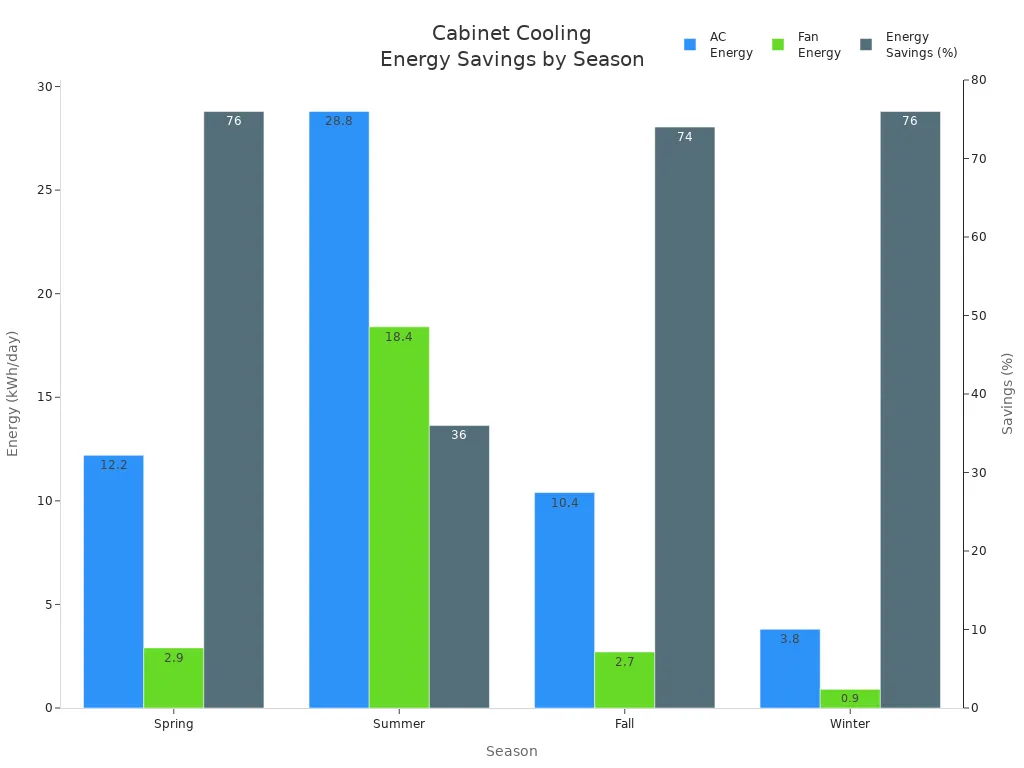
You also help the environment. Fans use less energy than air conditioning, which means you lower your carbon footprint and reduce greenhouse gas emissions. In one hospital, switching to cabinet fans saved 55.8 MWh of electricity per year and cut CO2 emissions by 34 tonnes.
You’ll find Linkwell fans in many industries:
- Manufacturing plants
- Electrical rooms and control panels
- Automotive and aerospace
- Food and beverage processing
- Pharmaceutical and cleanrooms
- Furnaces and kilns
The return on investment is clear. You can save up to 40% per unit each year, with some businesses saving $12,000 annually across 100 panels. Fewer replacements mean less downtime and lower labor costs. You also extend the life of your sensitive equipment, just like the benefits of a transmission cooler help your transmission last longer.
When you choose Linkwell, you get a partner who understands your needs. You get reliable cooling, energy savings, and peace of mind—whether you’re protecting a transmission or a control panel.
Transmission Cooling Fan vs. Cabinet Cooling Fan
Key Differences and Similarities
You might wonder how a transmission cooling fan and a cabinet cooling fan compare. Both fans protect equipment from heat, but they work in very different worlds. A transmission cooling fan keeps your transmission running at the right temperature. It works with a transmission cooler or a transmission oil cooler to move air across the cooler and pull heat away from the transmission fluid. This setup is vital for vehicles that tow, haul, or drive in tough conditions. If you install a transmission cooler, you give your transmission a longer life and better performance.
Cabinet cooling fans, on the other hand, keep electrical cabinets and control panels cool. These fans protect sensitive electronics from overheating. You find them in factories, telecom rooms, and data centers. They work with filters and sometimes with air ducts to keep air moving and dust out. Both types of fans fight heat, but their jobs and environments are unique.
Here’s a quick table to help you see the main differences:
| Feature | Transmission Cooling Fan | Cabinet Cooling Fan |
|---|---|---|
| Main Use | Vehicle transmission cooling | Electrical cabinet cooling |
| Works With | Transmission cooler, oil cooler | Filters, air ducts |
| Environment | Automotive, outdoor | Industrial, indoor |
| Key Benefit | Protects transmission | Protects electronics |
Choosing the Right Cooling Solution
You want the best cooling for your needs. If you need to install a transmission cooler, focus on your vehicle’s workload and climate. For electrical cabinets, think about the size of your enclosure and the heat load inside. Here are some things to consider when picking a fan for either job:
- Size: Make sure the fan fits your space and leaves room for future upgrades.
- Power Requirements: Match the fan’s voltage and current to your system.
- NEMA Rating: Pick a fan with the right rating for outdoor or harsh spots.
- Noise: Choose a quiet fan if you work in a place where noise matters.
- Installation & Maintenance: Look for fans that are easy to install and keep clean.
If you want a reliable cabinet cooling fan, Linkwell gives you options with high airflow, low noise, and easy maintenance. Their fans come with certifications and can be customized for your needs. When you install a transmission cooler, you protect your transmission from heat and extend its life. When you use a Linkwell cabinet fan, you protect your electronics and keep your business running.
Tip: Always check if your system needs a transmission cooler or a cabinet fan. The right choice saves you money and prevents breakdowns.
You want your transmission and electronics to stay safe and perform at their best. Cooling fans make a huge difference by preventing overheating and costly breakdowns. Linkwell stands out as a reliable partner for cabinet cooling solutions. Take a look at how Linkwell compares to other providers:
| Company Name | Customer Satisfaction | On-time Delivery | Reorder Rate |
|---|---|---|---|
| Linkwell Electric (Shanghai) | 5.0/5.0 | 100.0% | 20% |
| Shenzhen Ambeyond Technology | 5.0/5.0 | 96.8% | 25% |
| Shenzhen Sanqiao Environmental | 4.8/5.0 | 100.0% | 16% |
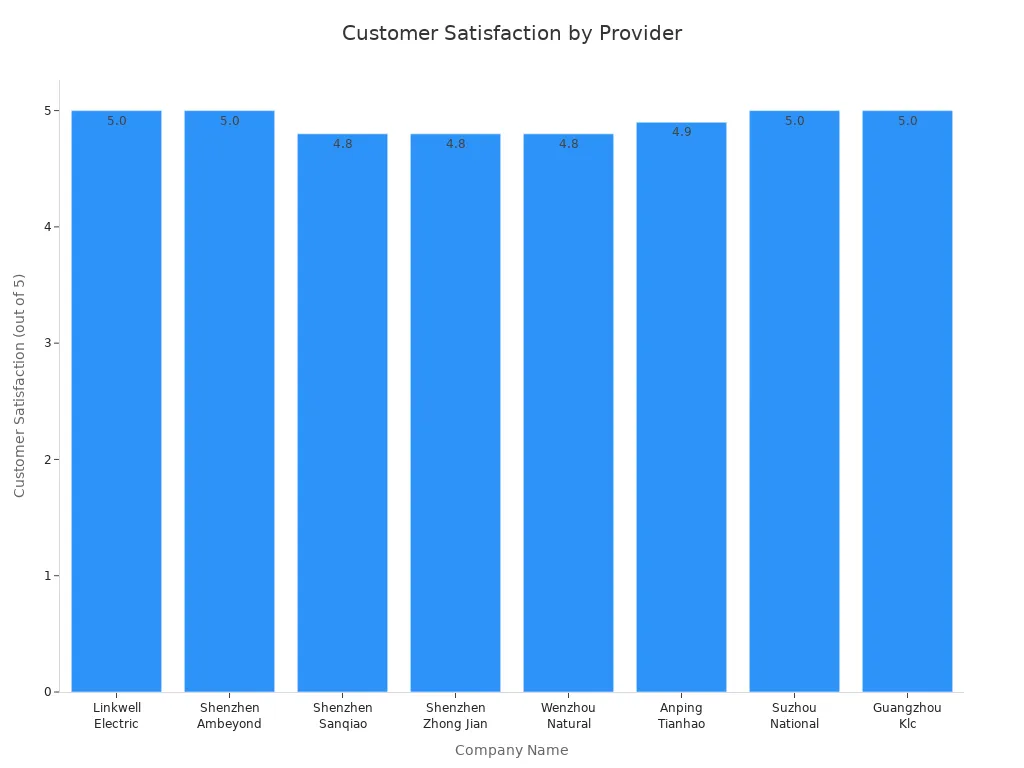
You can reach out to Linkwell for expert advice and custom cooling solutions that fit your needs.
FAQ
How do I know if my transmission cooling fan needs replacement?
You might notice strange noises, overheating, or poor shifting. If your transmission temperature rises often, check the fan. Replace it if you see damage or if it stops spinning.
What size cabinet cooling fan should I choose for my enclosure?
Pick a fan based on your cabinet’s size and heat load. You can use this simple table for guidance:
| Cabinet Size | Recommended Airflow (CFM) |
|---|---|
| Small | 80–150 |
| Medium | 150–350 |
| Large | 350+ |
Can I customize Linkwell fans for my specific needs?
Yes! You can request custom voltage, airflow, speed, and even branding. Linkwell offers OEM and ODM services to match your requirements.
How often should I change the filter in my cabinet cooling fan?
You should check the filter every three to six months. If your workspace is dusty, change it more often. Clean filters help your fan work better.
Are Linkwell cabinet cooling fans energy efficient?
Absolutely! Linkwell fans use optimized motors and smart designs. You save up to 15% on energy compared to standard models. Lower energy use means lower costs for you.

